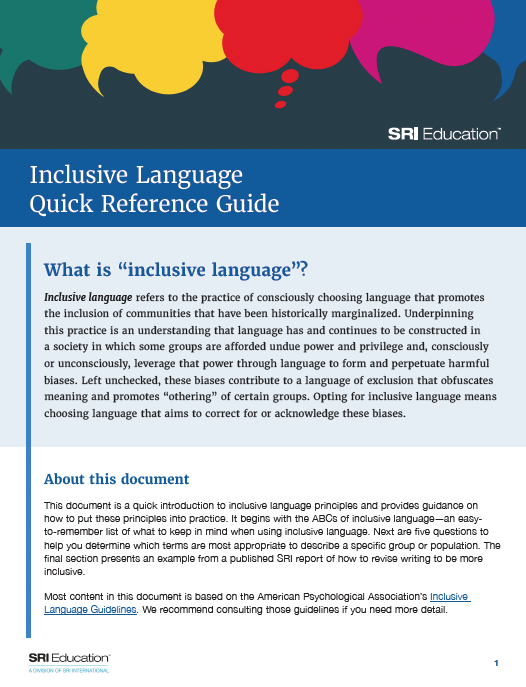Looking for a quick intro to inclusive language principles?
This quick reference guide is an introduction to inclusive language principles and provides guidance on how to put these principles into practice. It begins with the ABCs of inclusive language—an easy-to-remember list of what to keep in mind when using inclusive language. Next are five questions to help you determine which terms are most appropriate to describe a specific group or population. The final section presents an example from a published SRI report of how to revise writing to be more inclusive.
Inclusive language refers to the practice of consciously choosing language that promotes the inclusion of communities that have been historically marginalized. Underpinning this practice is an understanding that language has and continues to be constructed in a society in which some groups are afforded undue power and privilege and, consciously or unconsciously, leverage that power through language to form and perpetuate harmful biases. Left unchecked, these biases contribute to a language of exclusion that obfuscates meaning and promotes “othering” of certain groups. Opting for inclusive language means choosing language that aims to correct for or acknowledge these biases.
Access the Inclusive Language Quick Reference Guide to learn more.
Topics: News


